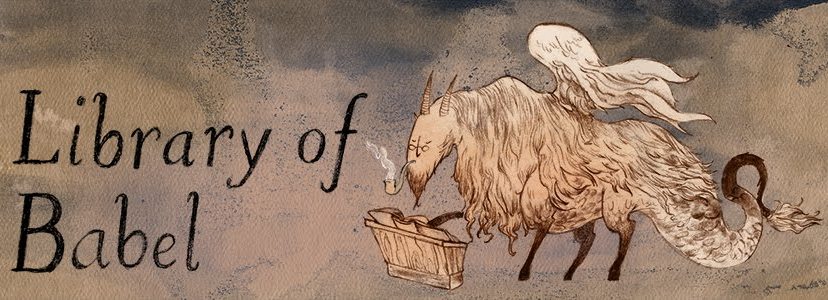Up here in the crow's nest I am swimming through the breeze—
One last memory from the sun as it is sinking by degrees—
And, high above, the albatross is following its light,
And I will sing to her as she flies by
On this beautiful night.
Some weeks when Friday rolls around, I'm feeling really creative and want to express myself. This week, I'm worn out from work. Instead of self-expression, I thought I would post some things I encountered in the last week that I thought were very beautiful.
***
The next beautiful thing is from my current attempt to read the Bible cover to cover; it is from the first book of the Bible, Genesis. In this story, there are two twin brothers. The younger brother, Jacob (whose name means "supplanter," that is, someone who takes someone else's place) has just deceived his old blind father, Isaac, into thinking that he is the older brother, Esau, and giving him (Jacob) the blessing that should belong to the firstborn:
As soon as Issac had finished blessing Jacob, when Jacob had scarcely gone out from the presence of his father Isaac, his brother Esau came in from his hunting. He also prepared savory food, and brought it to his father.
And he said to his father, "Let my father sit up and eat of his son's game, so that you may bless me."
His father Isaac said to him, "Who are you?"
He answered, "I am your firstborn son, Esau."
Then Isaac trembled violently, and said, "Who was it then that hunted game and brought it to me, and I ate it all before you came, and I have blessed him?—yes, and blessed shall he be!"
When Esau heard his father's words, he cried out with an exceedingly great and bitter cry, "Bless me also, father!"
But he said, "Your brother came deceitfully, and he has taken away your blessing."
Esau said, "Is he not rightly named Jacob [Supplanter]? For he has supplanted me these two times. He took away my birthright; and look, now he has take away my blessing."
The Bible's language can take a little getting used to, but I find its depiction of this incredibly fraught familial episode to be beautiful in its cuttingly bare-bones and barefaced expression of anger and grief.
***
The last beautiful thing is a paragraph from Gilead, a favorite book of mine. In this section, a boy goes with his father into the drought-ridden Kansas hinterlands of 1892, looking for his grandfather's grave, to tend to it, as he had passed away while working as an itinerant preacher. Just before the paragraph starts, they finish tending to the weed-grown, dusty dry graveyard, and the boy's father says a prayer:
Every prayer seemed long to me at that age, and I was truly bone tired. I tried to keep my eyes closed, but after a while I had to look around a little. And this is something I remember very well. At first I thought I saw the sun setting in the east; I knew where the east was, because the sun was just over the horizon when we got there that morning. Then I realize that what I saw was a full moon rising just as the sun was going down. Each of them was standing on its edge, with the most wonderful light between them. It seemed as if you could touch it, as if there were palpable currents of light passing back and forth, as if there were great taut skeins of light suspended between them. I wanted my father to see it, but I knew I'd have to startle him out of his prayer, and I wanted to do it the best way, so I took his hand and kissed it. And then I said, "Look at the moon." And he did. We just stood there until the sun was down and the moon was up. They seemed to float on the horizon quite a long time, I suppose because they were both so bright you couldn't get a clear look at them. And that grave, and my father and I, were exactly between them, which seemed amazing to me at the time, since I hadn't given much thought to the nature of the horizon.
My father said, "I would never have thought this place could be beautiful. I'm glad to know that."What I love about this passage is the startling joy of finding unexpected beauty in the wild, dreary, death-filled country graveyard; it is the narrator's joy, and also the reader's.
Photo Source: http://www.flickr.com/photos/paul_everett82/343237480/






